Via Bloomberg:
The worst is yet to come for the poorest performing Group-of-10 currency, Morgan Stanley says.
…“We’ve been bearish for a while,” said Daniel Blake, a strategist at Morgan Stanley in Sydney. “There’s a broad basket of highly levered household sectors, which include Australia, New Zealand, Canada and Sweden, which will all be negatively impacted by Fed tightening.” Australia and New Zealand have shown the highest correlation between housing and currencies, he said.
New Zealand’s dollar has dropped 6.1 percent against the greenback in the past month, the worst-performing G-10 currency. The kiwi slid to a five-month low of 68.51 U.S. cents earlier this week before trading at 68.92 cents late on Thursday.
Morgan Stanley’s Blake predicts the currency will decline to 66 cents by year-end, which would be the weakest since March 2016, and down from as high as 74.38 in January.
New Zealand’s household debt as a percentage of disposable income climbed to a record 168 percent in the middle of last year and stayed close to that level at the end of 2017, the latest central bank data show. The cost of servicing that debt is set to escalate with the Federal Reserve poised to add to its six rate increases since December 2015 as soon as next month.
Economies such as New Zealand “have been most willing to take on cheap financing to boost domestic demand,” Blake said. “As these trends unwind, we see these highly levered household currencies underperforming.”
Cripes. If you’re worried about household debt weighing on currencies then you can’t look past Australia:
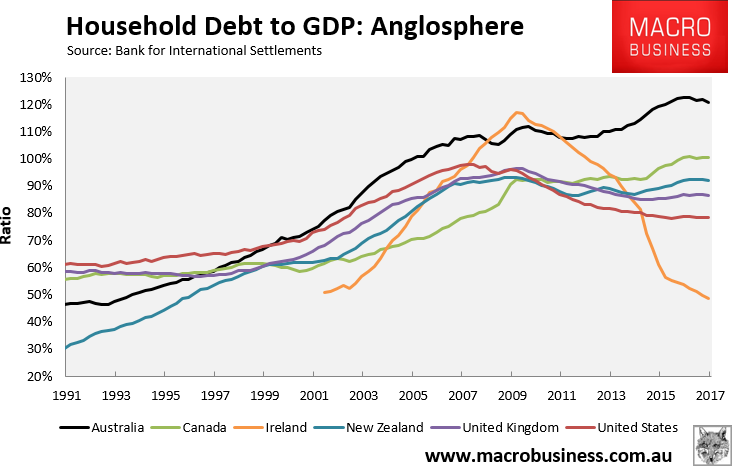
We make the Kiwis look like saints.
The next table shows the ratios of household debt to GDP as at the September quarter of 2017. As you can see, Switzerland (128%) has again taken gold with Australia (121%) taking silver and Denmark (117%) bronze. The Netherlands (106%) and Norway (102%) round out the top five:
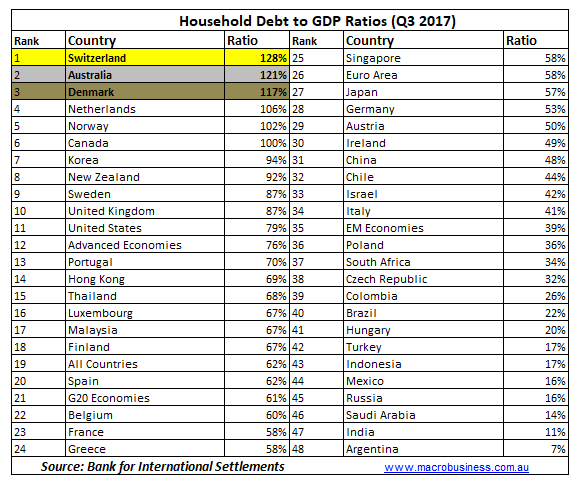
The below table shows that Australia also had the second highest DSR out of the 17 countries sampled:
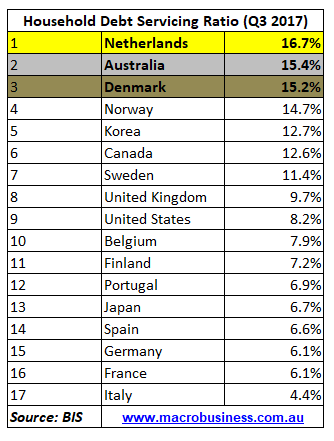
Australia’s DSR is also way higher than the other Anglosphere nation’s sampled:
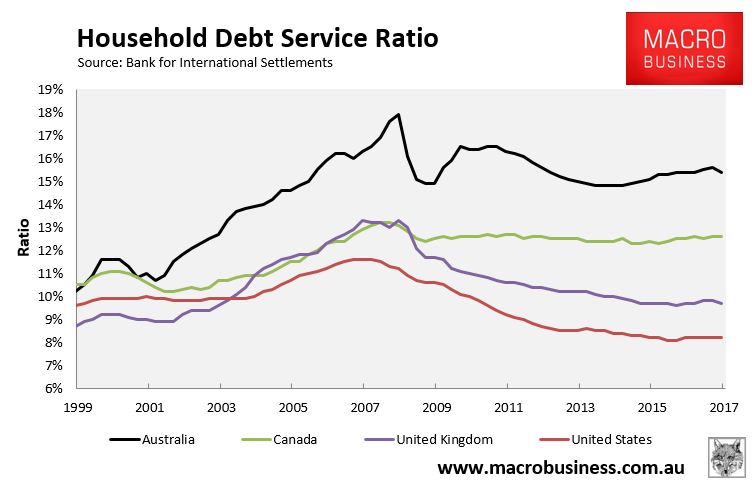
The data confirms that Australia is at the very top of most indebted households in the world.
Now get back to paying-off your mega-mortgage with those ever cheaper Australian dollars!
———————————————–
David Llewellyn-Smith is the chief strategist at the MB Fund which offers two options to benefit from a falling AUD so he is definitely talking his book. The first option is to use the MB Fund International Stocks Portfolio which is always 100% long as a part of your own asset allocation mix. The second option is to use an MB Fund tactical allocation in which we choose the asset mix for you, including exclusively international stocks, but with bonds and other assets as well to ensure a more conservative mix.
The recent performance of both is below:
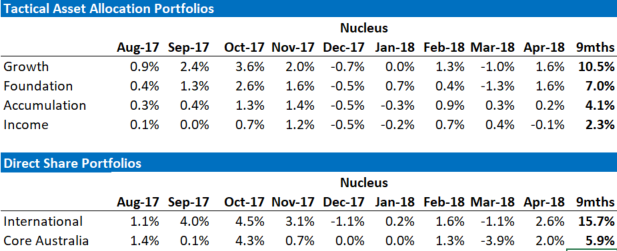
The information on this blog contains general information and does not take into account your personal objectives, financial situation or needs. Past performance is not an indication of future performance.

